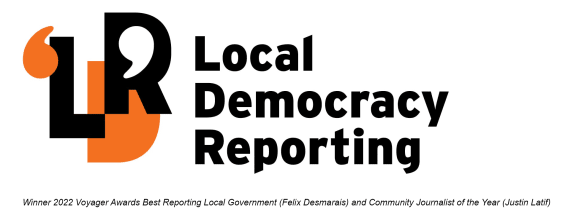
Tauranga's Daisy Fernandez, 13, killed by a motorbike rider on New Year's Eve 2007 in the Ripirō Beach sand dunes at Glinks Gully. Photo: Supplied
A family relation of Daisy Fernandez who was killed by a motorbike in Northland's Ripirō Beach dunes is worried about what might happen when hordes of hooning bikers and off-roaders pour onto the coastline over Labour Weekend.

Hundreds of four-wheel drives pouring onto Ripirō Beach at long weekends, and motorbikes still hooning in sand dunes are a major concern for Matt Elliott. Photo: Supplied / Northern Advocate
Tauranga's 13-year-old Daisy Fernandez died after being struck by an unregistered motorbike on Ripirō's Glinks Gully on New Year's Eve 2007. The Fernandez family are a long-time integral part of the Glinks Gully community.
Relation Matt Elliott, who hails from near Glinks Gully and now regularly holidays at a tiny coastal settlement south of Dargaville with his own family, said the community was anxious.
"It'll be like a plague of locusts swarming in and taking over the beach," Elliott said.

Motorbikes racing up and down Ripirō Beach are a constant fixture. Photo: Supplied / Northern Advocate
A recent incident saw a family pack up and hurriedly leave the beach in shock after a bike came over the dunes where their two-year-old had been playing just minutes before.
Four-wheel-drives and off-roaders from as far away as Palmerston North were now turning up and not enough was being done to police the problem, Elliott said.
New Zealand's most recent long weekend, Matariki in July, had seen "herds" of four-wheel-drives pouring onto Ripirō Beach at Glinks Gully, he added.
More than 500 had turned up on that weekend alone it is estimated.

A four-wheel drive group gathers on Ripirō Beach. Photo: Supplied / Northern Advocate
Residents and bach users report a dramatic increase in the number of these vehicles since Auckland Council started closing Muriwai Beach summer access in 2020, introduced fees-based annual permits for every vehicle driven on that beach and prosecution risk for bad behaviour.
Locals say increased Ripirō Beach traffic is also coming from Kaipara and Northland, one indicating toughened controls on Whangārei's east coast beaches were a factor.
More than 1000 beach users can be on Ripirō Beach over long weekends.
Ripirō Beach management working group member Snow Tane (Te Roroa), recently had to suddenly gather his grandchildren close at Baylys Beach, as vehicles sped by, too close.

He said the number of vehicles had doubled since toughened Muriwai access controls.
"My message to people coming to Ripirō Beach at Labour Weekend is to be responsible. There are some individuals that a not driving appropriately on the beach," Tane said.
The situation has become so bad at busy beach access pinch points, local residents have on occasion taken matters into their own hands.

Climbing motorbikes are damaging Baylys Beach cliffs. Photo: Supplied / Northern Advocate
In one situation they respectfully asked a car driver to stop doing donuts amidst dozens of people including children, at the Baylys Beach entrance. The driver did not stop so they removed keys from the person's car and called the Police.
At the same spot, another resident asked a motorbike rider to desist from doing wheel stands amongst the crowds and was abused, the rider refusing to back down until other locals came to the resident's side.
Working group Baylys Beach representative Con Fowler said it was about everybody being safe and looking after the environment.
"We love our beach and we want to have all the beach users, local and otherwise, treat the beach with care and respect for wildlife and other beach users around issues of driving, littering and dune management," Fowler said.
The actions of some were creating issues for many.

Beach speed signs such as this at Glinks Gully are constantly wrecked by those for whom they are not welcome. Photo: Supplied / Northern Advocate
The 107km-long Ripirō Beach is New Zealand's longest driveable beach - classified as a road with a generally 100k/h speed limit, except for a kilometre on either side of main beach entrances where that reduces to 30km/h.
Locals are hoping new 30km/h signage at beach accesses will be in place in time for Labour Weekend. But they worry these will again be torn down by those who do not want them there.
Large 30km/h signs are to be erected at Maunganui Bluff, Omamari, Baylys Beach, Glinks Gully and Pouto. Medium signs will be placed at other entrances whilst small signs will be placed in the dunes.
The signage is a first push from new KDC-led Ripirō Beach management working group set up in October as part of, initially, building beach safety through education. The multi-agency group includes Kaipara District Council (KDC), Department of Conservation, Fire and Emergency NZ, Kauri Coast 4WD Club, Northland Regional Council, NZ Police, Te Roroa, Te Uri o Hau and community representatives - who are working on a beach management plan.
Longtime Pouto bach owner and former KDC councillor David Wills said more constantly groups of as many as 60 four-wheel drive vehicles were arriving to travel the length of the beach.
It was now a numbers game, with increased arrivals amplifying ever-intensifying usage pressures.
Local Democracy Reporting is Public Interest Journalism funded through NZ On Air




